Around the world, leaders in national and local government are focused on how best to transform communities for the better. Digitalisation is offering powerful new technological solutions across a range of services to address citizens’ pain points.
This includes the ways that people use transportation to navigate the urban environment, notably through adoption of innovations such as Mobility-as-a-Service (MaaS), which not only simplifies access to multimodal networks but also has the potential to enable policy makers to positively impact the lives of the people they serve.
Mobility is a fundamental challenge for cities, regions and towns – and for people who live there or visit. Mobility impacts individual finances – for example 50% of people significantly underestimate the cost of car ownership. Transport accessibility also affects the sustainability of cities and the health of citizens – air pollution is estimated to contribute to the death of 300,000 Europeans each year.
And when wider climate impact is taken into account, it’s little wonder that the European Green Deal has targeted a 90% reduction in greenhouse emissions within cities by 2050.
MaaS can be a key contributor to these overarching social, environmental, and commercial goals. But what do authorities need to do to start their MaaS journey and roll it out effectively to maximise its benefits?
MaaS connects the journey to the destination
When most people picture MaaS, they imagine an app that combines journey planning, ticketing, payment and account management in one place. In other words, “I book a parking space, I take public transport into the city centre, and use an active travel mode from the station to my place of work. I also pay securely for the whole journey in-app with a single payment.”
At Flowbird, we’ve learned that adopting a siloed approach when thinking about MaaS doesn’t lead to the best outcome for end users because it fails to recognise its true value or potential.
When someone travels, it’s to go somewhere. Whether you’re visiting your grandmother across town or taking a trip to Paris to propose to your partner under the Eiffel tower – people travel not simply to reach a destination, but for a purpose.
MaaS enables cities to think just like your citizens. MaaS gives you the opportunity to understand not just how people travel but why people are travelling. This, in turn, helps unlock information, services and value that would be of most benefit to end-users.
For instance, when someone purchases a museum or football match ticket, a MaaS app can send notifications about the best ways to get to the event, including bus routes, scooter reservations, or nearby parking facilities.
Integrating data analytics between mobility and cultural / leisure activities can also help define what’s working and what isn’t in current networks – and remove the friction from people’s experiences.
For instance, a MaaS app can make real-time suggestions to visitors of a museum that they might want to take a bus, because the nearby car park has low capacity. Cities can also use MaaS to incentivise public transport in high traffic areas, to alleviate congestion.
Knowing you’re going to miss an event because you can’t find parking, or because you took the wrong bus is a terrible feeling. Imagine removing these barriers for locals and tourists, while reducing traffic jams and emissions at the same time.
A MaaS provider can help align the mobility policy of the city
When your city has multiple active travel providers, and many bus, train and parking options, it can be hard for consumers to understand the best choices. Now imagine integrating all these operators on a single MaaS app. Suddenly, aligning mobility policy with sustainability, economic and societal goals feels more achievable.
Analysing data across transportation providers will deliver much better insights into how each service works. Travellers will have the same ease of rider experience whether they go to work or attend an event downtown.
MaaS is about creating an effortless travel experience, no matter the mode of travel. If it’s not effortless, it’s not going to be an effective tool to drive more people to use public transport or improve sustainable travel choices.
MaaS can incentivise ridership and sustainable travel
A MaaS system also provides new ways of rewarding people to make more sustainable choices. What if those riders were prioritised at popular destinations? Or if sustainable vehicles got priority access to certain spaces?
A MaaS app user can also see a dashboard that provides insights on their carbon impact and how their wider neighbourhood is faring.
The app could also provide practical information linked to health, carbon footprint, and finances if they travelled more sustainably.
For example:
- If someone takes the bus, they could see what they’ve saved by not taking their car and paying for fuel and parking.
- If someone takes a scooter, they could see the CO2 they avoided emitting by using other modes.
- If someone rides a bike, they could see how it impacted their overall health.
The next logical step, which we’re working on at Flowbird, is ‘MaaS gamification, which enables MaaS authorities to reward travellers for making smart decisions. Whether financial, experiential, or recognition based, gamification can notify users with positive reinforcement when they make certain choices such as taking their first bus ride, travelling over 10 km on an e-bike, or reducing their transportation carbon footprint by X%.
Gamification can inspire people to make better travel decisions.
Building trust means focusing on rider behavioural trends not individuals’ data
MaaS systems are occasionally viewed as a way to get more data from people and passengers. But MaaS is more successful when authorities focus more on increasing ridership than increasing the amount of personal data they gather.
First, it builds trust with your users. They can feel comfortable booking a ride knowing you aren’t interested in their personal information. Plus, who doesn’t want to skip the lengthy forms that often exist when signing up to a new app?
Second, your MaaS platform will be more agile. If you’re not storing personal data, you don’t have to jump through as many hoops when it comes to security and compliance. Rather, you’re able to launch your MaaS project faster, and begin to change how commuters view travelling in your city.
You don’t need to reinvent the MaaS platform
MaaS isn’t designed for transportation companies, its purpose is to improve the lives of the citizens who use it by making mobility infrastructure more accessible, faster and safer to access. The better the platform you’re able to create, the happier your users. While the idea of embarking on a MaaS journey may feel intimidating, you don’t have to start from scratch.
The Flowbird platform is a white label MaaS solution that can be customised and branded by a city or region. If your city wants to emulate some of the transportation poster cities of the world, like Shanghai, Tokyo, New York, or London, you can. Flowbird makes the investment to get up and running affordable, and the process faster all around.
Get in touch to learn more about how you could get your city MaaS ready. Or check out our article on what cities need to do to make MaaS work.

 International
International  What politicians and policy makers need to know about MaaS
What politicians and policy makers need to know about MaaS  MaaS start small and scale up
MaaS start small and scale up  Flowbird Pay-by-Plate Pay Stations Launch in the City of New York
Flowbird Pay-by-Plate Pay Stations Launch in the City of New York  Lyon chooses Flowbird for the implementation of its new progressive parking policy
Lyon chooses Flowbird for the implementation of its new progressive parking policy  Is MaaS an essential foundation for liveable cities?
Is MaaS an essential foundation for liveable cities?  Wyre Forest District Council car parks to have electric vehicle (EV) chargers installed
Wyre Forest District Council car parks to have electric vehicle (EV) chargers installed  Flowbird Supplies 500 Pay and Display Parking Meters in Bratislava!
Flowbird Supplies 500 Pay and Display Parking Meters in Bratislava!  MaaS: What cities need to do to make it work
MaaS: What cities need to do to make it work 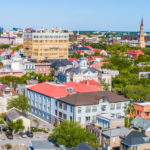 Charleston, SC Updates Its Parking System with Effortless Digital Solutions
Charleston, SC Updates Its Parking System with Effortless Digital Solutions  Clearwater, Florida Launches Pay by Text Solution – No App or Account Required
Clearwater, Florida Launches Pay by Text Solution – No App or Account Required  Carlisle, PA To Update Its Parking System with User-Friendly Solution in 2024
Carlisle, PA To Update Its Parking System with User-Friendly Solution in 2024  Open Payments Launched In Toulouse – Contactless Card Validation!
Open Payments Launched In Toulouse – Contactless Card Validation!  Flowbird and Semitan join forces to make mobility effortless!
Flowbird and Semitan join forces to make mobility effortless!  Meet the Team: David Thompson
Meet the Team: David Thompson  Solving traffic flow – what politicians and policymakers need to know
Solving traffic flow – what politicians and policymakers need to know 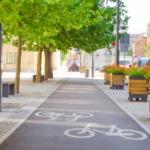 The future of the roadside curb
The future of the roadside curb 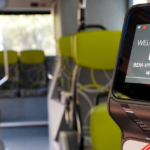 The future of the passenger experience and why effortlessness is the key
The future of the passenger experience and why effortlessness is the key  A guide to your city’s passengers: What you need to know
A guide to your city’s passengers: What you need to know  The 4 roadblocks in your city’s e-mobility plan
The 4 roadblocks in your city’s e-mobility plan  The road to zero-emissions cities (and, the parking when we get there)
The road to zero-emissions cities (and, the parking when we get there)  Why wait to decarbonise our regions?
Why wait to decarbonise our regions? 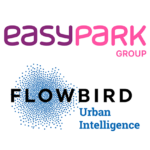 Flowbird Group takes a step forward in reshaping mobility through a strategic acquisition by EasyPark Group
Flowbird Group takes a step forward in reshaping mobility through a strategic acquisition by EasyPark Group  Park&Charge: Meet our expert
Park&Charge: Meet our expert  Flowbird gives cities a fast-track to e-mobility readiness
Flowbird gives cities a fast-track to e-mobility readiness 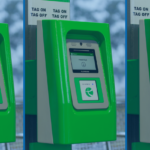 Coming soon to Perth: ‘tap to ride’ with your bank card or device
Coming soon to Perth: ‘tap to ride’ with your bank card or device  What’s next after open-loop transit payments?
What’s next after open-loop transit payments?  What would motivate you to use your car less?
What would motivate you to use your car less? 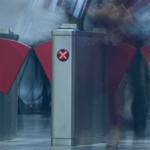 How to Boost the Efficiency of Fare Collection
How to Boost the Efficiency of Fare Collection  Lothian Buses new record: 100,000 taps in a day!
Lothian Buses new record: 100,000 taps in a day!  Smart Transport Ticketing: Benefits for Operators and Passengers
Smart Transport Ticketing: Benefits for Operators and Passengers 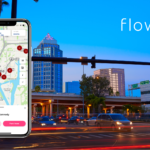 Flowbird App Empowers Tampa’s Parking Experience with Multi-App Integration
Flowbird App Empowers Tampa’s Parking Experience with Multi-App Integration  Meet the team: Justin Pounder
Meet the team: Justin Pounder  Flowbird, Umojo Partner for Off-Street Solution in Portand
Flowbird, Umojo Partner for Off-Street Solution in Portand  Cash versus digital payments in mobility systems
Cash versus digital payments in mobility systems  Flowbird teams up with Zuora to advance digitalisation and growth
Flowbird teams up with Zuora to advance digitalisation and growth  Flowbird app & Pay by Text now available in Sewickley!
Flowbird app & Pay by Text now available in Sewickley!  FabMob and Flowbird lead the way for accessible, sustainable mobility
FabMob and Flowbird lead the way for accessible, sustainable mobility  Passenger apps: Take 5 operator benefits
Passenger apps: Take 5 operator benefits  Contactless Interac Debit fare payments launch on Laval buses
Contactless Interac Debit fare payments launch on Laval buses  Edinburgh tramline extended to provide a route across the city
Edinburgh tramline extended to provide a route across the city  Take 5… Transport authority benefits of Account Based Ticketing
Take 5… Transport authority benefits of Account Based Ticketing  Parkex | Birmingham | 2023
Parkex | Birmingham | 2023  Flowbird Partners with the City of Minneapolis to Launch New & Improved MPLS Parking App
Flowbird Partners with the City of Minneapolis to Launch New & Improved MPLS Parking App 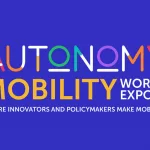 Flowbird presents its vision for connected urban mobility at AMWE in Paris
Flowbird presents its vision for connected urban mobility at AMWE in Paris  Clermont Ferrand makes the move to open payments on transport
Clermont Ferrand makes the move to open payments on transport  Flowbird’s transport talking points at Transport Ticketing Global
Flowbird’s transport talking points at Transport Ticketing Global 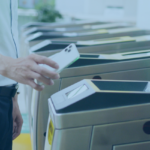 Take 5… Operator benefits of open payments in transport
Take 5… Operator benefits of open payments in transport  Flowbird envisions the transport ticket of tomorrow
Flowbird envisions the transport ticket of tomorrow  Ticketing & payments – a vital enabler of National Bus Strategy
Ticketing & payments – a vital enabler of National Bus Strategy  Flowbird announce new additions to the management team further to accelerate growth ambitions within the UK parking sector
Flowbird announce new additions to the management team further to accelerate growth ambitions within the UK parking sector  New London Brings Additional Convenience Parkers with Flowbird App
New London Brings Additional Convenience Parkers with Flowbird App  Podcast: Will transport payments drive a MaaS revolution?
Podcast: Will transport payments drive a MaaS revolution?  Take 5… Passenger benefits of open payments on transport
Take 5… Passenger benefits of open payments on transport  South Orange Parking Authority Updates Its Parking System with User-Friendly Solution
South Orange Parking Authority Updates Its Parking System with User-Friendly Solution  New ParkNYC App Proves to be Unrivaled Success in First 30 Days
New ParkNYC App Proves to be Unrivaled Success in First 30 Days 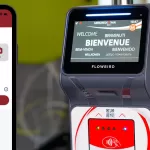 Monapass – One App, One Account, for Open Ticket Mobility
Monapass – One App, One Account, for Open Ticket Mobility  Translink Milestone for National Account Based Ticketing System for Northern Ireland
Translink Milestone for National Account Based Ticketing System for Northern Ireland  Flowbird Announces New CEO
Flowbird Announces New CEO  Flowbird unveils Off-Street Solution at IPMI 2022
Flowbird unveils Off-Street Solution at IPMI 2022  Flowbird is featured in the “Ticketing in Mobility as a Service” handbook published by UITP & STA
Flowbird is featured in the “Ticketing in Mobility as a Service” handbook published by UITP & STA  Flowbird Group acquires Your Parking Space
Flowbird Group acquires Your Parking Space  Transport Ticketing Global | London | 2022
Transport Ticketing Global | London | 2022 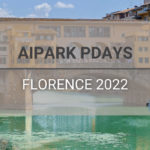 AIPARK Pdays | Florence | 2022
AIPARK Pdays | Florence | 2022 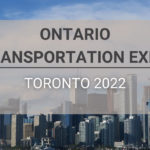 Ontario Transportation Expo | Toronto | 2022
Ontario Transportation Expo | Toronto | 2022 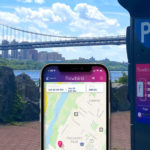 Flowbird Implements Automated Parking System To Palisades Interstate Parks
Flowbird Implements Automated Parking System To Palisades Interstate Parks  Smart City Forum | Warsaw | 2022
Smart City Forum | Warsaw | 2022  Birmingham Jefferson County Transit Authority Partners with Flowbird
Birmingham Jefferson County Transit Authority Partners with Flowbird  PARKEX | Birmingham | 2022
PARKEX | Birmingham | 2022  EVS35 | Oslo | 2022
EVS35 | Oslo | 2022  European Mobility Expo | Paris | 2022
European Mobility Expo | Paris | 2022  Konferencja SPP | Grudziądz | 2022
Konferencja SPP | Grudziądz | 2022  Svepark Conference | Gävle | 2022
Svepark Conference | Gävle | 2022  Milipol Qatar 2022
Milipol Qatar 2022 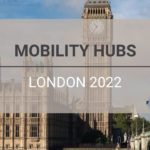 Mobility Hubs | London | 2022
Mobility Hubs | London | 2022  MILIPOL Qatar | Doha | 2022
MILIPOL Qatar | Doha | 2022 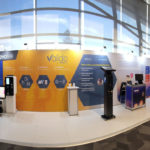 A look back at the PACE 2022
A look back at the PACE 2022  Thank you for visiting us at Intertraffic Amsterdam
Thank you for visiting us at Intertraffic Amsterdam 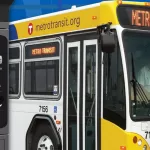 Flowbird Group to Expand Off-Board Fare Payments for Metro Transit
Flowbird Group to Expand Off-Board Fare Payments for Metro Transit 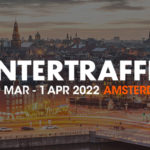 Intertraffic | Amsterdam | 2022
Intertraffic | Amsterdam | 2022  Flowbird completes first ever local authority Electric Vehicle charge point project for Wokingham Borough Council
Flowbird completes first ever local authority Electric Vehicle charge point project for Wokingham Borough Council  Podcast: the rise of open payments in transport
Podcast: the rise of open payments in transport 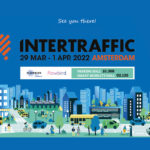 See you soon at Intertraffic Amsterdam 2022!
See you soon at Intertraffic Amsterdam 2022!  Flowbird is excited to share with you the latest news about Hong Kong!
Flowbird is excited to share with you the latest news about Hong Kong! 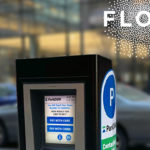 City of Des Moines upgrades to smart multi-space technology with Flowbird Group
City of Des Moines upgrades to smart multi-space technology with Flowbird Group 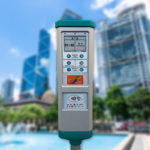 Flowbird trusted by HKT for their Smart City program
Flowbird trusted by HKT for their Smart City program  Flowbird announces a licensing agreement with Concar
Flowbird announces a licensing agreement with Concar 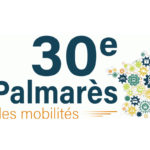 Mobility Awards City Rail & Transport
Mobility Awards City Rail & Transport  A great strategic win in Hamburg
A great strategic win in Hamburg 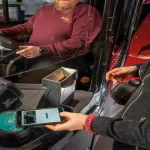 Lothian Adopts Weekly Capping with Support from Flowbird
Lothian Adopts Weekly Capping with Support from Flowbird  Tisséo, Flowbird and CIC deploy Open Payment in Toulouse
Tisséo, Flowbird and CIC deploy Open Payment in Toulouse 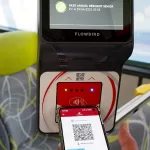 International Spotlight falls on MaaS in Monaco
International Spotlight falls on MaaS in Monaco 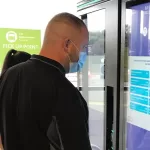 Northern Completes Major UK On-Station Rail Retailing Rollout
Northern Completes Major UK On-Station Rail Retailing Rollout  Flowbird Transforms Urban Mobility in Monaco
Flowbird Transforms Urban Mobility in Monaco 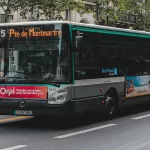 Conduent Transportation and Flowbird Selected to Equip Paris Ile-de-France Mobilités’ Buses and Trams with Next-Generation Onboard Ticketing Platform
Conduent Transportation and Flowbird Selected to Equip Paris Ile-de-France Mobilités’ Buses and Trams with Next-Generation Onboard Ticketing Platform  Flowbird’s Open Payments Expertise Wins Innovation Award
Flowbird’s Open Payments Expertise Wins Innovation Award  STL teams up with Flowbird and other new business partners to deliver a Québec First ― Next-generation credit card payment solution on all Laval buses
STL teams up with Flowbird and other new business partners to deliver a Québec First ― Next-generation credit card payment solution on all Laval buses 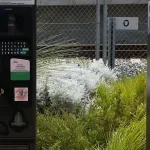 Flowbird Extends Ticketless Parking Across Transperth SmartRider Network
Flowbird Extends Ticketless Parking Across Transperth SmartRider Network 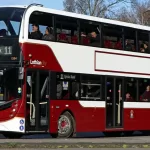 One million ‘taps’…and counting
One million ‘taps’…and counting 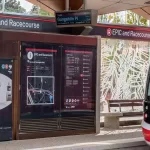 Canberra Launches Smart City Light Rail Network with Flowbird Technology
Canberra Launches Smart City Light Rail Network with Flowbird Technology  Flowbird Releases Mobile Ticketing App – ‘Loop Trolley’ App is Now Live in St. Louis, Missouri
Flowbird Releases Mobile Ticketing App – ‘Loop Trolley’ App is Now Live in St. Louis, Missouri 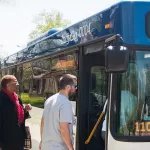 IndyGo Partners with Flowbird to Modernise Fare Collection System
IndyGo Partners with Flowbird to Modernise Fare Collection System 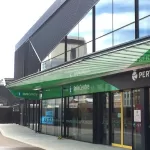 Transperth Extends Partnership with Flowbird Transport Intelligence
Transperth Extends Partnership with Flowbird Transport Intelligence 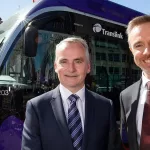 World-class ticketing system glides into Belfast
World-class ticketing system glides into Belfast  Edinburgh Trams Taps into Contactless Benefits
Edinburgh Trams Taps into Contactless Benefits 